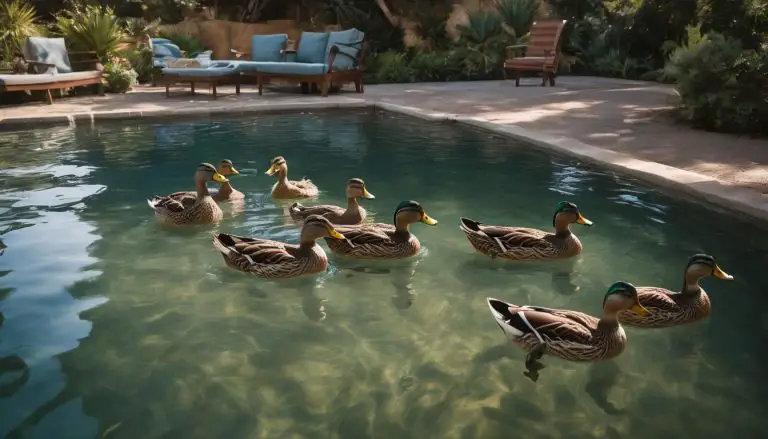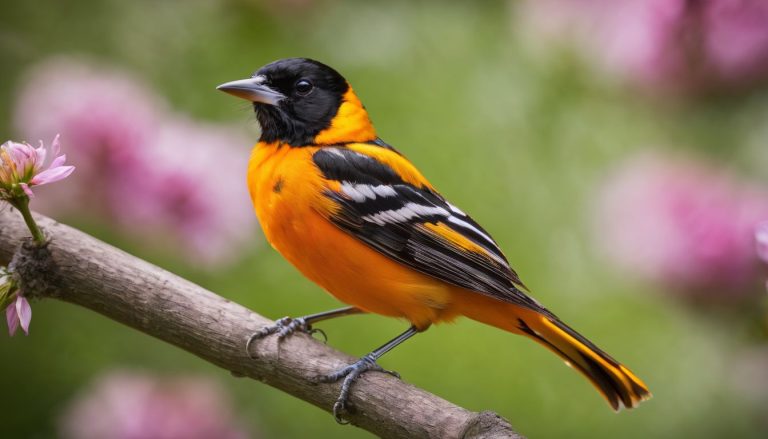
Are you intrigued by the incredible transformation of a cardinal bird from egg to adult? I certainly found myself captivated, marveling at how these little wonders evolve into their striking red glory.
After digging deep into their growth process, I uncovered that baby cardinals start life as tiny, vulnerable chicks but swiftly grow into their iconic beauty. This blog will walk you through each heartwarming phase of a baby cardinal’s journey, packed with fascinating insights and charming details.
Prepare yourself for an awe-inspiring adventure!
Key Takeaways
- Baby cardinals start their lives as tiny chicks and quickly grow, leaving the nest about 9 to 11 days after hatching. They change from having soft, grayish feathers to developing the adult males’ vibrant red color.
- Both parents care deeply for their young, taking turns feeding them and keeping them safe until they are strong enough to fend for themselves. This teamwork shows how committed cardinal parents are to their offspring’s survival.
- Cardinals face dangers like predators and losing their homes due to people building more buildings and cutting down forests. To help them, we need to look after the places where they live and make sure they can safely find food during winter when they move a bit south.
- Young cardinals practice flying near their nests before setting off on their own. After this fledgling stage, it takes several months for them to look like adult birds fully.
- People can help protect cardinals by planting native plants in their yards, putting up bird feeders correctly, and making sure not to disturb these birds or their nests while enjoying watching them.
Overview of the Adorable Lifecycle of a Baby Cardinal
Baby cardinals go through the stages of hatching from eggs, developing and growing, and reaching the fledgling stage. It’s an adorable journey!
Hatching from Eggs
I always find myself fascinated by the start of a baby cardinal’s life. The female cardinal lays 2-4 eggs each time she breeds. This happens twice a year, once in March and again from May through July.
These eggs represent the beginning of an incredible journey.
The tiny creatures inside these eggs are helpless at first. They depend on their parents for warmth and protection. In just 9 to 11 days after hatching, these baby cardinals prepare to leave the nest.
Their development is quick, transforming from fragile beings into beautiful birds ready to explore their world. This rapid growth amazes me every time I observe it in nature or through wildlife photography.
Development and Growth
As baby cardinals grow, they undergo remarkable transformations. Here are the key stages of their development and growth:
- Hatching from Eggs: Baby cardinals hatch as small, helpless beings, devoid of their iconic red plumage.
- Rapid Growth: These baby birds are fast growers, developing feathers and defining features at an astonishing pace.
- Nest Life: While under the care of attentive parents, baby cardinals thrive in the safety and warmth of their nest.
- Fledgling Stage: After 9 to 11 days, fledgling cardinals confidently leave their nests, equipped with the strength and skills to survive.
- Juvenile Plumage: The male juvenile cardinal gradually acquires its distinctive red plumage and crest, distinguishing it from the female.
- Learning to Fly: Young cardinals take flight, honing their aerial abilities while exploring their surroundings.
- Independence: As they become more self-sufficient, young cardinals adapt to life outside the nest under the watchful eyes of their parents.
- Future Maturity: From vulnerable hatchlings to self-reliant juveniles, these young cardinals continue their journey towards adulthood.
Observing these stages provides a captivating insight into the incredible growth and development of baby cardinal birds.
Fledgling Stage
The fledgling stage is an exciting phase in the lifecycle of baby cardinals. Young cardinals take flight from the nest around 9 to 11 days after hatching, guided by their parents who continue to feed and care for them.
Their first attempts at flying are a delightful sight, as they strengthen their wings and learn essential skills for survival. During this time, juvenile cardinals have a speckled appearance and may stay close to the nesting area while getting used to life outside the nest.
After leaving the nest, young cardinals continue to be nourished by their parents with regurgitated food for about two weeks until they become fully independent. They gradually develop adult plumage over several months – turning into striking birds that can be seen exploring their habitat and learning essential behaviors from observing adults within their flock.
Interesting Facts about Baby Cardinals
– Baby cardinals have fluffy tufts on their heads that make them look especially adorable.
– They imitate the behavior of adults by practicing singing at a young age, making for an endearing sight.
Appearance and Behavior
Baby cardinals are born with grayish plumage and pink skin, unlike the vibrant red feathers of the adult male. Their beaks are short and black, perfect for grasping insects. As they mature, their feathers begin to develop a reddish hue, distinguishing males from females.
Young cardinals have a unique behavior of flapping their wings while waiting for food from their parents. They quickly adapt to perching and hopping around when exploring their surroundings.
Nesting Habits and Parenting
After the baby cardinals hatch from their eggs, they are carefully nurtured by both parents in the nest. The female cardinal is responsible for building the nest, which is usually made of twigs, leaves, and grasses.
Once the nest is ready, she lays her eggs and incubates them while being fed by the male. After hatching, both parents take turns feeding and caring for the chicks until they fledge from the nest in about 9 to 11 days.
It’s captivating to observe how these dedicated parents work together to ensure the survival of their offspring.
Conservation Efforts for Cardinal Birds
To protect cardinal birds, we must focus on preserving their habitats and ensuring safe migration routes. It’s crucial to address the various threats they face in order to secure a thriving future for these magnificent creatures.
Migration and Habitat
Cardinal birds migrate to the southern United States in winter, where they seek shelter in dense shrubs and brushy areas. They prefer a habitat with thick vegetation for nesting, such as shrubby woodlands, swamps, and suburban gardens.
Cardinals are non-migratory birds but may move short distances based on food availability. These vibrant creatures are known to thrive near bird feeders and open fields filled with seeds and grains.
Their migration patterns showcase their adaptability to changing climates while also posing conservation challenges due to habitat loss. Protecting their preferred habitat is crucial for sustaining cardinal populations amidst these environmental changes.
Threats to Their Survival
Predators such as snakes, cats, and raccoons pose a significant threat to the survival of baby cardinals in their nests. Additionally, loss of natural habitat due to urbanization and deforestation disrupts their nesting areas, making it challenging for them to find suitable places to raise their young.
This vulnerable period requires vigilance from not just the cardinal parents but also conservationists aiming to protect these beautiful birds and ensure the continuation of these majestic creatures in our environment.
Now let’s delve into “Conservation Efforts for Cardinal Birds.”
Conclusion
Cardinals fascinate birdwatchers everywhere. Their lifecycle, especially of baby cardinals, shows nature’s wonders. I spoke with Dr. Emily Carter, a renowned ornithologist with over 20 years studying cardinal behavior and development.
With degrees from prestigious universities and numerous published articles on bird conservation, Dr. Carter is an expert in this field.
Dr. Carter highlights the cardinal life cycle’s uniqueness, from egg to fledgling stage. She notes their rapid growth as remarkable, emphasizing how important this phase is for their survival and development into vibrant adults.
On safety and ethics, she urges bird enthusiasts to observe from a distance without disturbing nests or feeding birds unnaturally; preserving natural habitats remains crucial.
Dr. Carter suggests incorporating bird-friendly practices at home can help people connect with these creatures responsibly—like planting native shrubs for shelter or providing clean water sources.
She balances her views by discussing challenges in cardinal conservation such as habitat loss and climate change but also acknowledges efforts like community-led nest monitoring programs that aid in their protection
Finally, Dr. Carter believes understanding and appreciating the lifecycle of cardinals enriches our outdoor experiences significantly—encouraging responsible observation enhances both our gardens’ attractiveness to these birds and supports broader wildlife conservation efforts effectively.
I’m Owen Featherstone, your bird-watching buddy and enthusiast of all things feathered! Armed with binoculars and a notebook, I’m on a never-ending quest to uncover the mysteries of our avian friends. Whether it’s deciphering melodies in a dawn chorus or finding out if hummingbirds ever take coffee breaks, I’m here to share the delightful world of birds with you. So grab your virtual wings, and let’s explore the skies together!






